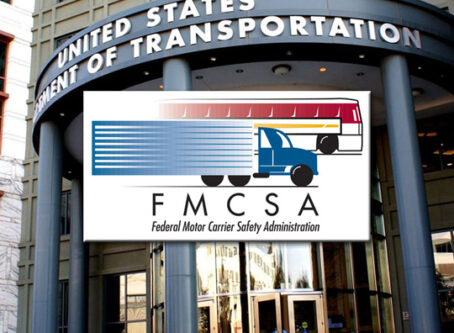Dashcam footage receives two opposing conclusions in Florida Supreme Court case
The estate of a man killed in a truck-involved crash is claiming a dashcam video proves the opposite of what the trucking company claims, adding a layer of complexity to a Florida Supreme Court case that attempts to update summary judgment laws to include video technology.
On June 4, the estate of Jon Lopez filed its brief with the Florida Supreme Court, stating its case why the state’s high court should affirm an appellate court’s decision to not allow summary judgment for trucking company Wilsonart. A trial court had dismissed the case, relying on dashcam footage that allegedly exonerated the trucker. However, the Fifth District appeals court, reversed that decision but asked the Supreme Court for guidance regarding summary judgment laws.
At the center of the case is the dashcam video footage. The trial court determined the footage was sufficient evidence to grant Wilsonart’s motion for summary judgment. The appeals court ruled that current Florida law does not allow video evidence, no matter how compelling, to be a deciding factor when awarding summary judgment. However, the appellate court asked the Supreme Court to hear the case to determine whether summary judgment standards should be modernized to include video evidence.
Dashcam case background
The case goes back to January 2017, when trucker Samuel Rosario was driving his 2015 Freightliner for Wilsonart on U.S. 192 in Osceola County, Fla. According to the complaint, Rosario’s negligence caused Lopez to slam his pickup truck into the rear of the tractor-trailer. Lopez died from his injuries.
One eyewitness said that Rosario had suddenly changed lanes just before the crash. The truck then swerved from the center lane to the left lane. An expert provided by Lopez concluded that part of the Freightliner was in the right lane when the crash occurred. That conclusion was based in part by the lone witness testimony.
However, dashcam video evidence suggests a different story. Rosario testified he was traveling in the center eastbound lane and began to slow down as he approached an intersection. Then he felt an impact to the rear.
Rosario said he was coming close to a full stop with his wheels straight with the intent to drive forward. Dashcam video shows the tractor-trailer in the center and gradually coming to a stop at a red light. At this point, the truck was struck. Consequently, the tractor-trailer was forced to veer left, striking the car in front of it.
Rosario claims that because Lopez rear-ended the trailer the pickup truck driver is negligent under state law. Furthermore, dashcam video evidence corroborates Rosario’s account of events while contradicting the one eyewitness account.
Consequently, the trial court dismissed the case based on the convincing video evidence. An appeal followed.
In its opinion, the appellate court ruled that the trial court’s dismissal was incorrect “when it concluded that the video evidence ‘blatantly contradicts the eye witness testimony and the opinion of plaintiff’s expert.’”
Supporting the ruling, the appellate court pointed out that attorneys for Wilsonart and Rosario relied on two cases that showed that “clear, objective, neutral video evidence” can be contradictory to the point of rendering the opposing party’s evidence incompetent. However, in neither of those cases was the video evidence used to grant summary judgment.
According to the opinion, Florida has a more restrictive standard for summary judgment. More specifically, a court cannot decide the credibility of a witness or consider the weight of conflicting evidence.
Regardless of how convincing the video evidence can be, it is up to a jury, not a judge, to determine how much weight it holds when determining who is at fault in this case.
In the opinion, the appellate panel submitted a certified question to the Florida Supreme Court. The appellate court concluded that technological advances have increased “the likelihood of video and digital evidence being more frequently used in both trial and pretrial proceeding.” It asked the high court to consider the following question of “great public importance:”
“Should there be an exception to the present summary judgment standards that are applied by state courts in Florida that would allow for the entry of final summary judgment in favor of the moving party when the movant’s video evidence completely negates or refutes any conflicting evidence presented by the nonmoving party in opposition to the summary judgment motion and there is no evidence or suggestion that the videotape evidence has been altered or doctored?”
Lopez’s argument
In a brief filed on June 4, Lopez argues that “this case is not about a sudden lane change. Instead, the plaintiff’s expert opined that the defendant driver negligently drove in two lanes at once, meaning he violated a traffic statute.” Ironically, this conclusion is based on the dash cam footage, which Wilsonart is also relying on to prove its conflicting side of the story.
Essentially, Lopez is disputing the factual premise of the case. Wilsonart is claiming that dashcam footage proves Rosario’s account of events. In fact, that was the same conclusion the trial court reached that led to the initial dismissal in question. However, Lopez claims its “driving-in-two-lanes-at-once opinion” has support by not only Rosario’s dashcam footage but also a second dashcam video from an eyewitness’s vehicle.
Lopez argues that the Fifth District’s opinion has a materially false statement about the expert’s opinion. More specifically, the appellate court stated that the driving-in-two-lanes-at-once conclusion was based largely on eyewitness testimony, not dashcam footage.
Furthermore, Lopez is arguing that the entire premise of the case is wrong. Decisions made thus far have been based on whether or not Rosario made a sudden lane change. However, Lopez argues that is was never about a sudden lane change. Rather, Rosario is being accused of causing the crash for being in two lanes at once, which is not referenced in either the appellate court or trial court decisions.
Factual disputes aside, Lopez is also disputing whether or not the Florida Supreme Court should have the authority to change summary judgment rules in the first place. In the brief, Lopez notes that the Florida state constitution allows the Supreme Court to both make and interpret procedural law. However, it also claims that the grant of legislative and judicial powers to a single institution is “uncommon in our republic.”
“In this controversy, the court must not exercise its legislative power,” Lopez argues. “This court must act solely under its judicial power; that power enables this court to clarify and settle the meaning of written laws—but not to make law.”
Outside interest
This case has caught the attention of several parties with a stake in the outcome. The following groups filed briefs as amicus curiae before Lopez’s attorneys filed the response brief:
- Florida Trucking Association.
- U.S. Chamber of Commerce.
- Florida Justice Reform Institute.
- Florida Defense Lawyers Association.
- Product Liability Advisory Council.
- Federation of Defense and Corporate Counsel.
- Business Law Section of the Florida Bar.
- Florida Chamber of Commerce.
- Florida Health Care Association.
- Associated Industries of Florida.
Nearly every amicus brief filed asks the state Supreme Court to adopt a federal standard established by the U.S. Supreme Court commonly known as the Celotex Trilogy. Essentially, once a party moving for summary judgment meets its initial burden of establishing an absence of material fact, the burden then shifts to the opposing party to provide evidence of their claims, not merely showing there “is some metaphysical doubt as to the material facts,” according to the U.S. Supreme Court.
Unlike Florida law, the Celotex Trilogy standard provides no obligation on the movant to introduce evidence to negate the claim.
Every amicus brief filed in the Wilsonart dashcam case wants Florida to move to that standard as 41 other states have.
That is, except for the last two that were filed on Monday, June 8.
The latest motions to file an amicus curiae brief come from the American Board of Trial Advocates and a group of retired Florida state court justices. Deviating from the other amicus briefs, the two groups are siding with Lopez. The American Board of Trial Advocates (ABOTA) echoes Lopez’s argument of going through proper channels to change standards.
“ABOTA does not intend to advocate for one summary judgment standard over another in its amicus brief,” the group states. “Rather, ABOTA will encourage the court to go through the rules committee process prior to making any change to the current iteration of the rule.”
The group of judges made a similar argument.
“To the extent this court is contemplating changing the summary judgment standard in Florida state courts to mirror the standard as applied in federal court, the retired judges believe that any such change should go through a rules committee so that the committee can receive comments from both practitioners and from sitting state court judges—whose workload and resources would be impacted by the change,” the judges state.
Related dashcam stories:
- Trucking company’s dashcam case in Florida Supreme Court gains outside interest.
- Florida Supreme Court will hear truck crash case centered on dashcam evidence.
- Trucker petitions Florida Supreme Court to hear dashcam case.
- Convincing dashcam video not sufficient to dismiss case in Florida.









